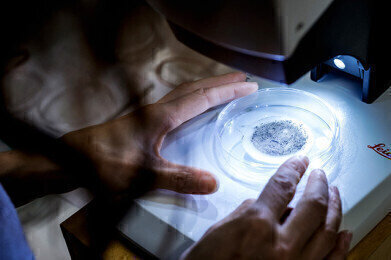Water/Wastewater
Method for temporal monitoring of microplastic sedimentation
Feb 16 2021
The effects of microplastics on our health and the environment are being rigorously studied all across the world. Researchers are identifying microplastic sources and their potential routes to the environment by examining rainwater, wastewater, and soil.
Microplastics have been found in nearly all organisms and habitats everywhere in the world. However, factors contributing to the influx and accumulation of microplastics in water ecosystems aren’t fully understood yet. The focus of microplastics research has, for a long time, been on the age of microplastics found in sediments, and on the time it takes to accumulate there. So far, however, temporal changes in sedimentation haven’t really been considered in microplastics research.
Researchers in Finland (University of Eastern Finland, University of Turku, University of Helsinki) have tested the sediment trap method to analyse annual accumulation rates and possible seasonal variation. The sediment trap was installed on the lake bottom in the deepest part of the basin. Microplastics sink to the bottom of the basin together with other solid material, and they accumulate in sediment traps that are emptied on a regular basis. The sediment trap itself is a well-established method for sedimentological studies. The main focus in the development of the method was on the isolation of microplastic samples from sediment, and on testing the method’s feasibility in a body of water.
The researchers tested the method in the basin of Huruslahti Bay, Finland, in 2017–2018. The annual amount of microplastics accumulating in the sediment of Huruslahti Bay was 32,400 pieces per square metre in a year. The most important advantage of the method is that it can be used to determine the time it takes from microplastics to enter and accumulate in bodies of water. Time plays an important role when modelling the influx and accumulation of microplastics, as well as in predicting any environmental risks they might cause in the future.
Digital Edition
AET 28.3 September 2024
September 2024
Business News - ENVEA announces acquisition of APAQ Group - SICK and Endress+Hauser sign strategic partnership - Efforts to curb gas flaring intensify amid environmental concerns Air Monito...
View all digital editions
Events
Sep 21 2024 Tianjin, China
Meteorological Technology World Expo 2024
Sep 24 2024 Vienna, Austria
Water Africa and East Africa Building & Construction
Sep 24 2024 Kigali, Rwanda
Elmia Water and Wastewater Fair - POSTPONED
Sep 24 2024 Jonkoping, Sweden
Sep 25 2024 Vientiane, Laos



















